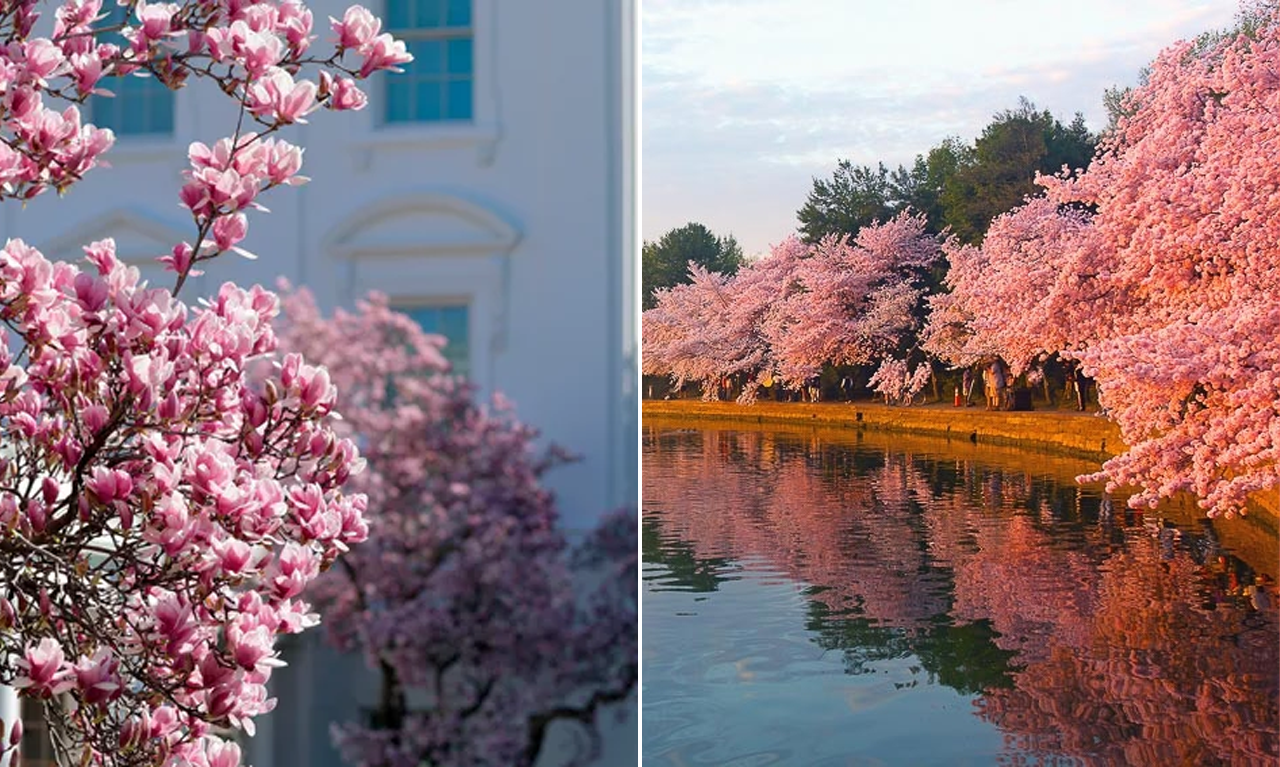It’s not just the groundhog. Cherry blossoms, the pinkest landmark in the nation’s capital, are one of the country’s key markers that spring is coming.As good a fortune teller for the changing seasons, the pink blooms are also an indicator of something else: climate change.Decades of data show an increase in average global temperatures, and cherry blossoms have not been spared the effects. Warming temperatures have caused the trees to bloom earlier than they should — leaving the blossoms vulnerable to late-winter frosts. The peak bloom dates have shifted about eight days earlier in the year, according to data collected on the trees since 1921 by the National Park Service. Viewing in the app? Click here for the best interactive
WASHINGTON —It’s not just the groundhog. Cherry blossoms, the pinkest landmark in the nation’s capital, are one of the country’s key markers that spring is coming.
As good a fortune teller for the changing seasons, the pink blooms are also an indicator of something else: climate change.
Decades of data show an increase in average global temperatures, and cherry blossoms have not been spared the effects.
Warming temperatures have caused the trees to bloom earlier than they should — leaving the blossoms vulnerable to late-winter frosts.
The peak bloom dates have shifted about eight days earlier in the year, according to data collected on the trees since 1921 by the National Park Service.
Viewing in the app? Click here for the best interactive experience.
The average peak bloom — or when 70% of the blossoms are open — is April 3, based on the trees’ history in the U.S.
But, over the past 25 years, the blossoms have reached peak bloom before that average 19 times, and they’re on track to do the same this year.
The National Park Service estimates that this year’s peak bloom will occur March 28-31. National Mall and Memorial Parks Chief of Communications Mike Litterst said he’s putting his money on March 28 as the exact date.
Peak bloom times are estimated by looking at the high temperatures each day, gauging historical records and examining “indicator trees” that typically bloom earlier than the rest.
This year’s bloom is not as early as last year’s March 17 peak, but it’s still earlier than historic peak bloom times. The flowers last year are tied for the second earliest peak bloom on record, behind the March 15 bloom in 1990.
While unexpected earlier blooms can be disappointing for the travel plans of nearly 1.6 million tourists who come to D.C. to see the trees, they don’t pose risk to tree health — yet.
If the trend of global warming and earlier blooms continues, the blooms could come out before bees and other pollinators have arrived.
“If there aren’t pollinators there, there’s nobody to carry the pollen, and that’s when you would have a concern about death of trees,” Litterst said.
This, though, Litterst said, isn’t an immediate risk.
It’s not just warmer temperatures — sea level rise attributed to climate change also poses a threat to the iconic trees.
A combination of sea level rise and failing infrastructure has caused water levels to be about six feet higher than the tidal basin walls can handle. Every day brackish tidal water would flow over the seawalls and hit the roots of the trees, causing harm.

Last year the National Park Service began a $113 million construction project to rebuild the tidal basin walls — a project that called for the removal of about 150 cherry blossom trees, including the District’s beloved “Stumpy,” to make room for the restoration.
Those trees will be replaced after construction is complete. Japan is renewing its original gesture of friendship by giving the U.S. 250 cherry trees in honor of the nation’s upcoming 250th anniversary.
The National Park Service also has a commercial nursery for cherry trees, as about 90 are replaced each year due to their finite lifespan.
The seawall reconstruction project involves construction crews anchoring the walls to bedrock to avoid sinking and using sustainable design so that if water levels rise faster than anticipated, height can be added.
The project is ahead of schedule and on budget, Litterst said. They’ve completed about 450 of the 6,800 feet of reconstruction and are planning to be done by the spring of 2026.







